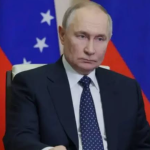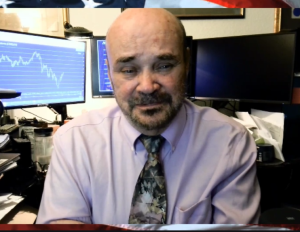For decades, New York City has been on the path of urban decline – the glittering wealth and glamour of Manhattan notwithstanding. It has been losing population for years as retirees, businesses, and anyone with the ability to leave have been abandoning the Big Apple for the sunshine of Florida – and elsewhere. Those anchored to New York City by jobs and families have jumped the border to New Jersey. Even the left-wing mavens and maestros of Manhattan are spending more time in homes in warmer, safer and less expensive red states to the south.
New York City’s population peaked in 2020. Since then, more than 640,000 residents have fled the city, driven by high costs, a crushing tax burden, crime concerns, and remote work flexibility. While international migration and births have helped offset some of the losses, they have not fully compensated for the outflow. The net decline in the city’s population from 2020 to 2024 was 8.1 percent – from approximately 8.7 million residents down to 8.0 million.
Like many of the deep blue cities and states, population is declining as unprecedented numbers of citizens are literally fleeing. This means a loss of congressional seats – with California on track to lose four, Illinois two and New York at least one. The main gainers are Texas and Florida — with other southern red states in the mix.
But New York City stands out for what the voters are on track to do – elect a radical left socialist (with a tinge of antisemitism), Zohran Mamdani, as mayor. NYC is ailing and is about to commit political suicide.
Mamdani’s policy platform poses serious risks to New York City’s economic stability, public safety, and social cohesion. If implemented, his agenda will undoubtedly accelerate the exodus of residents and businesses, destabilize the financial sector, and deepen divisions within the city. (Whew! That is a lot of damage from one guy.)
Mamdani’s proposals—ranging from rent freezes to government-run grocery stores—risk exacerbating these pressures. His platform, rooted in democratic socialism (bordering on communism), may appeal to New York voters, but its economic consequences could be catastrophic – with the history of socialism as the cautionary warning.
One of the most alarming aspects of Mamdani’s candidacy is his stance on the financial industry. Wall Street is the backbone of NYC’s economy, contributing more than 20 percent of the city’s tax revenue, and employing hundreds of thousands of residents. Mamdani’s rhetoric and policy proposals—such as increased corporate taxes and financial transaction levies—threaten to drive major firms out of the city.
In recent years, firms like Goldman Sachs and Elliott Management have already relocated parts of their operations to Florida and Texas. If Mamdani’s policies are enacted, this trend would accelerate, hollowing out the city’s tax base and undermining its global financial standing.
Equally concerning is Mamdani’s perceived hostility toward the Jewish community. His refusal to condemn slogans like “Globalize the Intifada” and his support for legislation banning donations to charities linked to Israel have sparked widespread backlash. Prominent Jewish leaders have predicted of a “mass exodus” of Jewish residents and Jewish-owned businesses. In a city where Jews make up nearly 13 percent of the population, the perception or reality of such antisemitic rhetoric is not only divisive—it is dangerous.
Mamdani’s approach to public safety is another red flag. He has proposed shifting certain police responsibilities to social workers — a move critics argue could embolden criminal activity. NYC’s crime rate remains elevated, with major crimes up 30 percent since 2019, including spikes in robbery and assault. While reform is needed, gutting police functions without a robust alternative risk further destabilizing communities and deterring tourism and investment.
On housing, Mamdani’s plan to freeze rents and expand public housing may sound appealing, but it’s economically unsustainable. Rent freezes discourage private investment in housing, leading to deteriorating infrastructure and reduced supply. NYC already faces a housing shortage, with vacancy rates below four percent and median rents exceeding $4,000 per month. Government-run solutions, without private sector involvement, are unlikely to meet demand or maintain adequate quality.
Mamdani’s housing policies are most like those in China and Russia – where housing conditions are intolerable.
His proposal to create government-operated grocery stores is similarly problematic. While intended to combat food deserts, such ventures often suffer from inefficiency, poor management, and extremely high costs passed on to taxpayers. Cities, such as Detroit and Baltimore, have experimented with similar models, only to shutter them due to unsustainable losses. NYC’s budget deficit is projected to exceed $7 billion by 2027—adding enormous new liabilities with potentially declining revenue streams is fiscal madness.
Beyond the specifics, Mamdani’s broader platform is riddled with promises that are unlikely to be kept. Free bus service, universal childcare, and expansive public housing require billions in additional funding. With a shrinking tax base and rising costs, these initiatives would either balloon the budget deficit or necessitate steep tax hikes—driving even more residents and businesses away.
In most elections, voters hope candidates will deliver on their promises. In Mamdani’s case, New Yorkers—and Americans—should hope he does not. His policies, while ideologically driven, are detached from economic realities and social complexities. They run contrary to American values of free enterprise and free markets that have been the backbone of the American Dream – and New York City’s past successes. If enacted, they could transform NYC from a global powerhouse into a cautionary tale – making Hollywood’s 1979 dystopian movie “The Warriors” look prescient.
So, there ‘tis.











